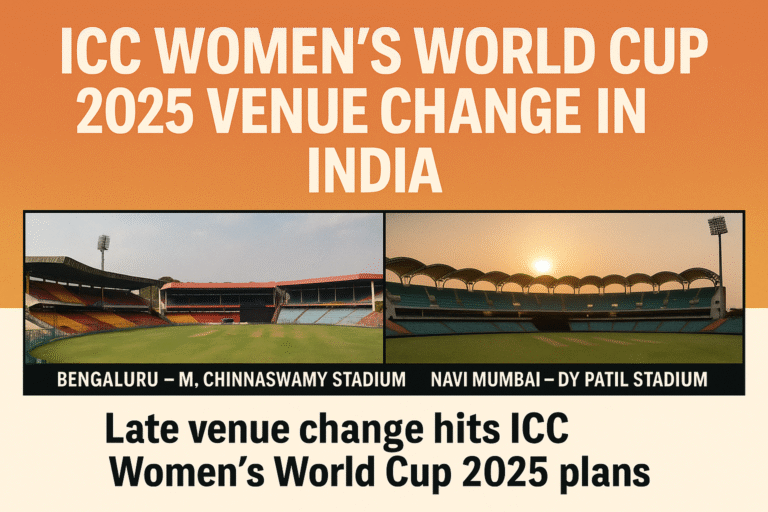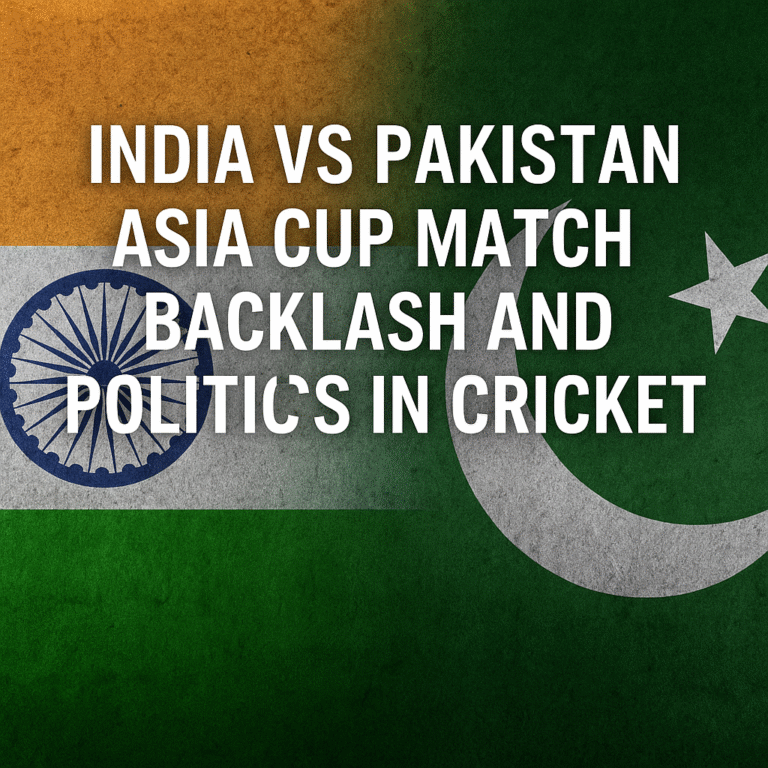India’s Fastest Run Chase in Asia Cup vs UAE: Record, Performances, and the Bigger Debate
India’s fastest run chase in Asia Cup history came against UAE in Dubai, where the Men in Blue barely broke a sweat while chasing down a modest target. The overall match was wrapped in just around two hours. On paper, it was historic, but it also raised questions about competitiveness, entertainment value, and the role of associate nations in major tournaments.
Match Recap: A One-Sided Affair
India faced hosts UAE in their Asia Cup 2025 opener, and the contest ended before anyone expected. Batting first, UAE were bundled out for just 57 runs in 13.1 overs. Their batting collapsed under relentless pressure from India’s bowlers, with only two players crossing double figures.
The star of the innings was Kuldeep Yadav, who delivered a masterclass in spin bowling. He finished with 4 wickets for 7 runs in 2.1 overs, dismantling UAE’s middle and lower order. Support came from the pace attack, which kept the top order quiet and ensured no partnership ever settled.
In reply, India treated the chase as an extended power-hitting practice. Abhishek Sharma smashed 30 off 16 balls, striking 2 fours and 3 sixes. His intent at the top of the order ensured there was never a doubt about the result. Shubman Gill anchored the chase with an unbeaten 20 off 9 balls, finishing the job with elegance.
India reached 60 for 1 in just 4.3 overs, sealing victory by 9 wickets and registering their fastest successful run chase in Asia Cup history.
The Positive Side: Opportunities for Associate Nations
Despite the mismatch, matches like these have significance for world cricket.
- Learning Opportunities: UAE’s bowlers got the chance to test themselves against some of the world’s best batters. Their batters faced high-quality spin and pace, something that domestic tournaments in smaller nations cannot replicate.
- Global Visibility: Playing against India guarantees worldwide viewership. For associate nations, this exposure not only boosts the profile of their players but also helps attract sponsorships and local support.
- Path to Growth: These games can be stepping stones. Players take home valuable lessons, coaches analyze mistakes, and boards use such experiences to push for better infrastructure.
For UAE, even in defeat, the chance to share the field with India was a learning experience that cannot be measured purely in runs and wickets.
The Negative Side: Dull Spectacle for Fans
While development is important, international tournaments are also meant to entertain fans and provide competitive cricket. This is where such one-sided games draw criticism.
- Lack of Contest: The game was effectively over in the first half. Once UAE folded for 57, the only question was how quickly India would chase. The absence of tension or competition took the excitement out of the contest.
- Too Short for Spectators: Fans who paid for tickets and traveled to the stadium expected a full evening of cricket. Instead, the entire match ended in about two hours, leaving spectators disappointed. A T20 match typically lasts close to four hours, but this clash was over before fans could even settle in.
- Tournament Credibility: Major tournaments like the Asia Cup are meant to showcase the best cricket in the region. When one-sided matches dominate, it risks reducing the credibility of the competition and makes some games feel like formalities rather than true contests.
For neutral fans, the encounter was underwhelming. They witnessed records being made, but not the kind of drama that keeps audiences glued to their seats.
The Debate: Exposure vs Entertainment
This match has reignited a long-standing debate in cricket. Should associate nations be given direct entry into premier tournaments if the gulf in skills is this wide?
- Supporters of inclusion argue that without exposure to top-class teams, associate nations will never grow. Playing against India, Pakistan, or Sri Lanka provides them benchmarks and motivates young players in their countries to take cricket seriously.
- Critics believe that such mismatches hurt the quality of the competition. They suggest that associate nations should first go through qualifying rounds, ensuring that only the most competitive teams get to face full members in high-profile tournaments.
There may be a middle ground. Associate nations could be given more bilateral series or regional tournaments against second-string sides of full members, preparing them gradually for the big stage. That way, the learning continues but major tournaments maintain their competitive edge.
What This Means for Asia Cup 2025
India’s fastest run chase against UAE will be remembered as a record-setting moment. However, it also highlighted the disparity within the tournament. For India, it was a confidence booster and a warm-up ahead of tougher challenges. For UAE, it was a tough night but also an invaluable experience. For spectators, it was historic but short-lived, leaving many unsatisfied.
The Asia Cup still has blockbuster fixtures to come, but this match served as a reminder that tournament structures need balance. Cricket must grow globally, but fans also deserve matches that carry suspense and competitive energy.
India’s Fastest Run Chase in Asia Cup: A Record That Sparks Reflection
India’s fastest run chase in Asia Cup vs UAE is more than just a stat in the record books. It showcased India’s ruthless efficiency with bat and ball while exposing the gap between elite and emerging cricketing nations.
For India, it was a routine victory. For UAE, it was a steep learning curve. For fans, it was a mix of amazement at the speed of the chase and disappointment at the lack of entertainment.
As cricket continues to expand, the challenge for organizers is clear. They must find a balance that allows associate nations to grow without making major tournaments feel predictable. This record will be celebrated, but it will also remain a case study in the ongoing debate over exposure, entertainment, and the future of global cricket.





One Comment